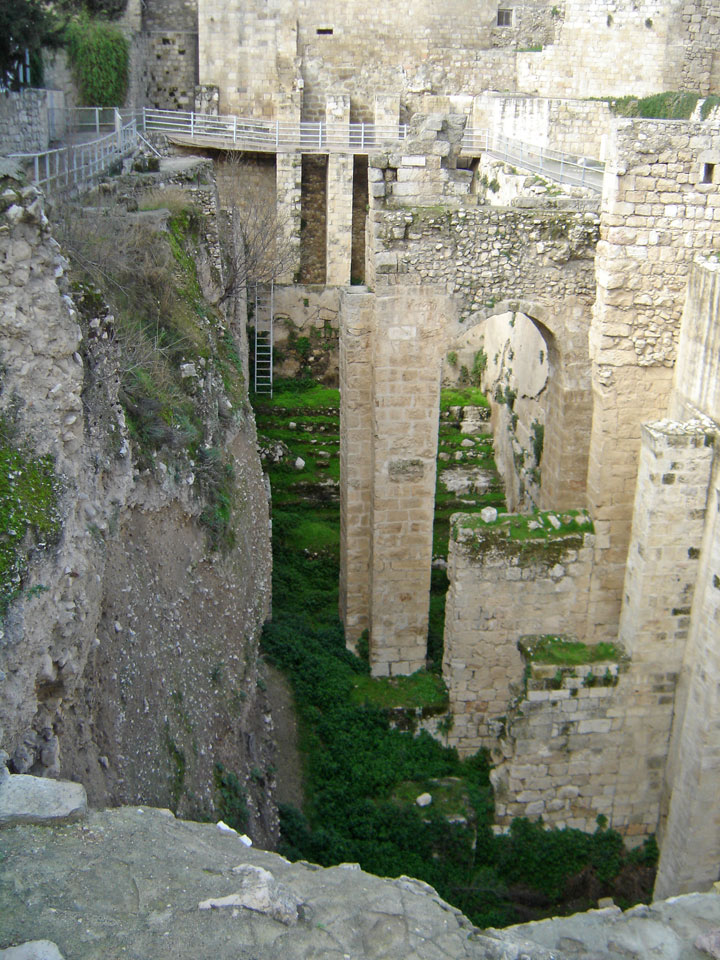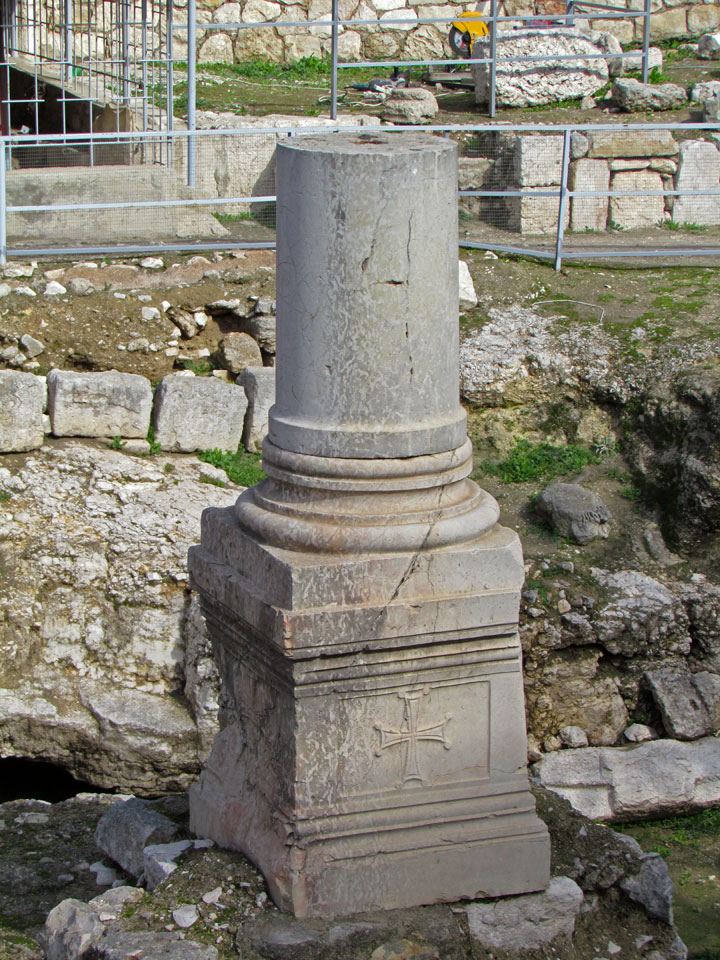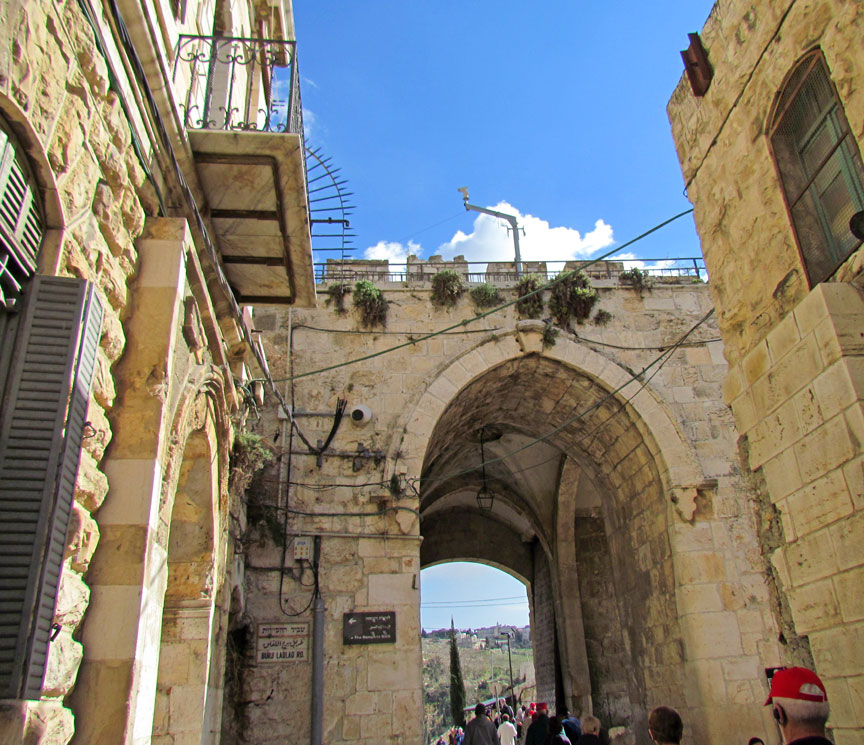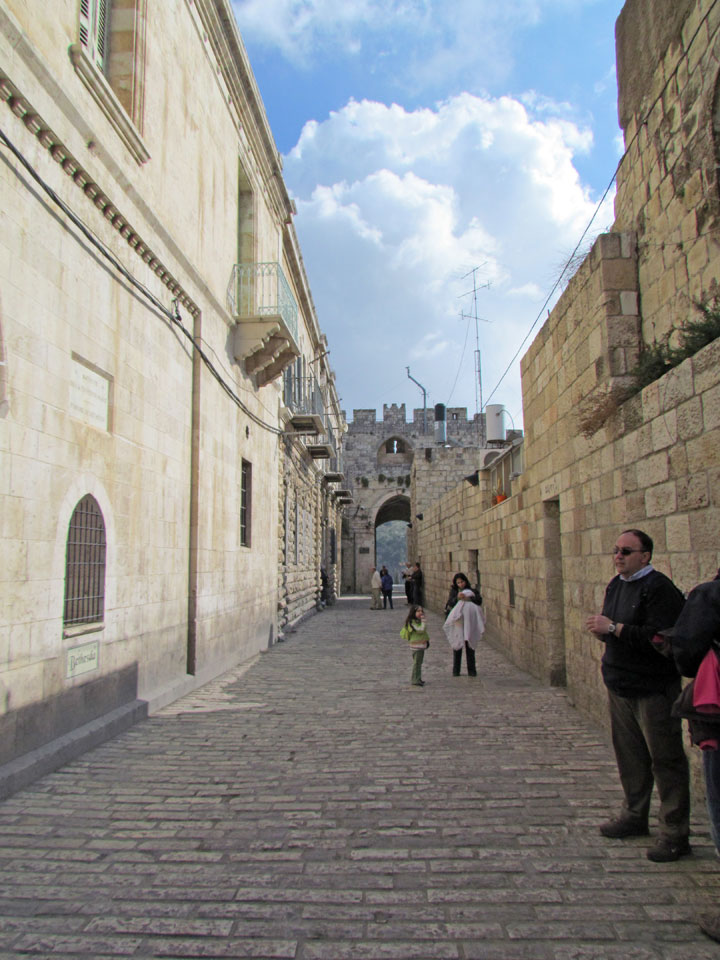

Church of St. Anne
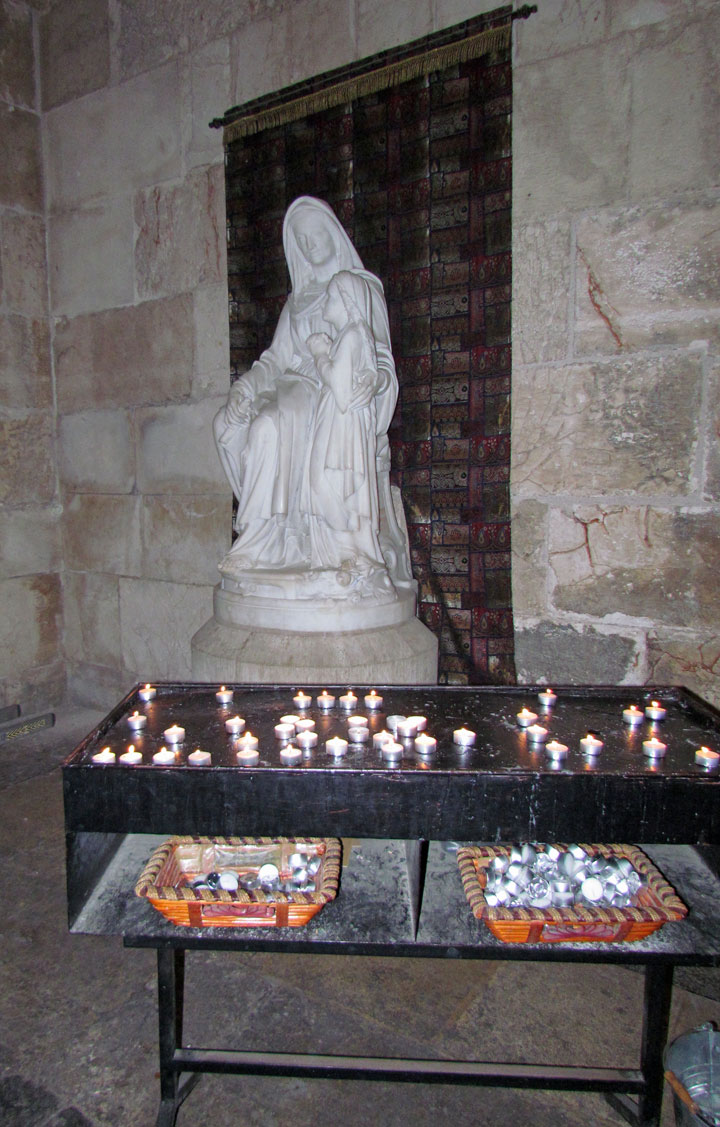
St. Anne
The Church of St. Anne is a Roman Catholic church, located at the start of the Via Dolorosa, near the Lions' Gate and churches of the Flagellation and Condemnation, in the Muslim Quarter of the old city of Jerusalem.
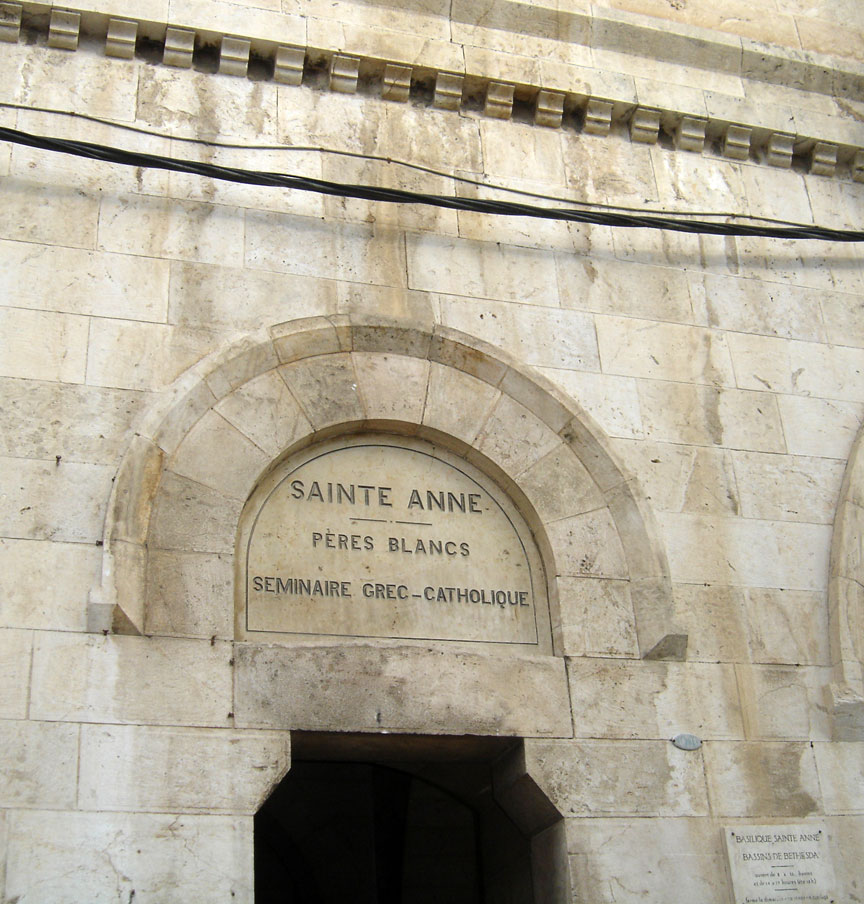
The current church, erected near the remains of an earlier Byzantine basilica,
and over the site of a grotto believed by the Crusaders to be the birthplace of
Anne the mother of Mary, was completed in 1138 by Arda, widow of Baldwin I, the
first titled king of Jerusalem. The earlier Byzantine basilica had been built
over what remained of a pagan shrine to either the Egyptian god Serapis or the
Greek god Asclepius, both gods of healing. Unlike many other Crusader churches,
St. Anne's was not destroyed by the Mamelukes who captured the Holy Land in the
twelfth century. In 1192, a year after his conquest of Jerusalem, he converted
it into an Islamic seminary, noted by the Arabic inscription Salahiya (of
Saladin) above the entrance. During the Muslim rule of Palestine, Christian
pilgrims were only permitted inside the grotto after paying a fee. Eventually
the church was abandoned and fell into ruin. In 1856, in gratitude for French
support during the Crimean War, the Ottoman Sultan Abdülmecid I presented it to
Napoleon III. It was subsequently restored, but the majority of what remains
today is original. Currently St. Anne's belongs to the French government and is
administered by the White Fathers, an order of the Catholic church named for the
color of their robes.
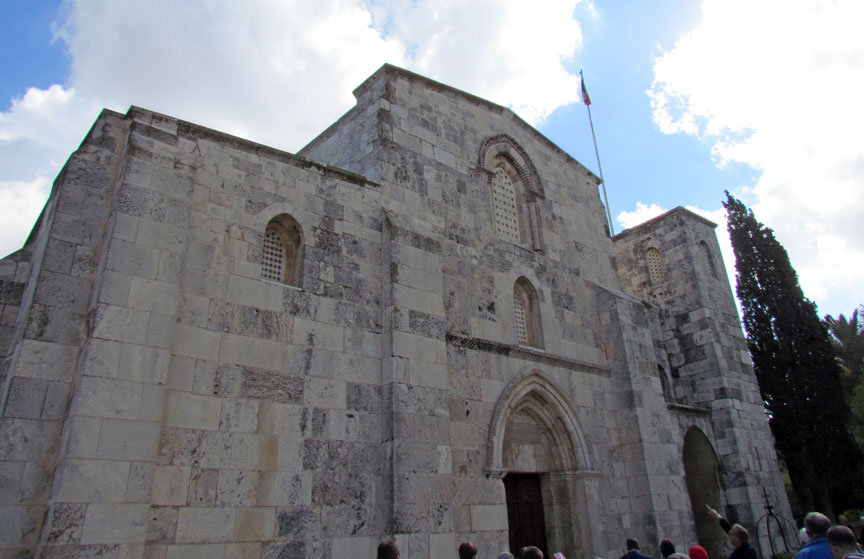
Built between 1131 and 1138 to replace a previous Byzantine church, and shortly
thereafter enlarged by several meters, the church is an excellent example of
Romanesque architecture. The three-aisled basilica incorporates cross-vaulted
ceilings and pillars, clear clean lines and a somewhat unadorned interior. The
nave is separated from the lower lateral aisles by arcades of pointed arches.
The high altar, designed by the French sculptor Philippe Kaeppelin incorporates
many different scenes. On the front of the altar are depicted the Nativity
(left), the Descent from the Cross (center) and the Annunciation (right); on the
left-hand end is the teaching of Mary by her mother, on the right-hand end her
presentation in the Temple. In the south aisle is a flight of steps leading down
to the crypt, in a grotto believed by the Crusaders to be Mary's birthplace. An
altar dedicated to Mary is located there. The Byzantine basilica was partly
stretched over two water basins, collectively know as the Pools of Bethesda, and
built upon a series of piers, one of which still stands today in its entirety.
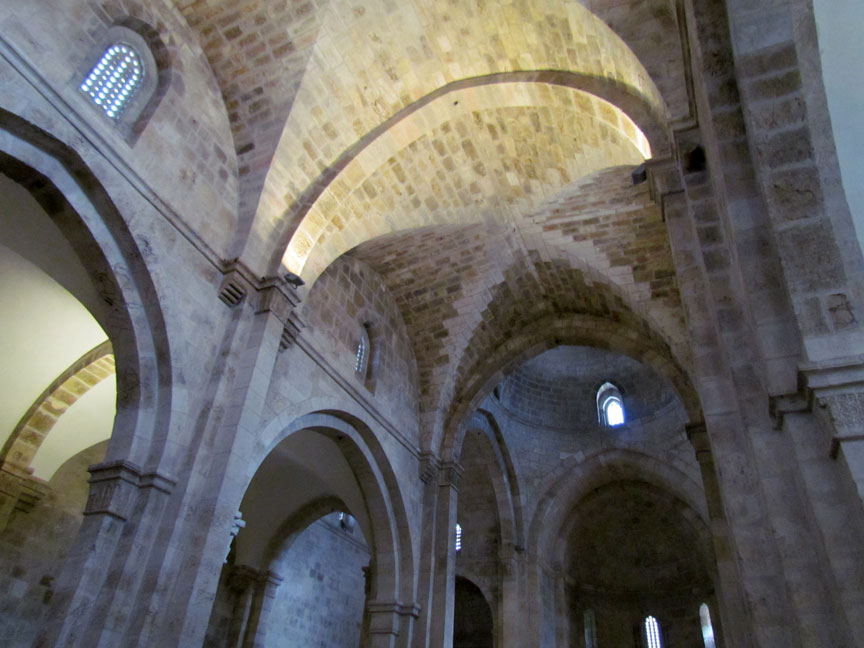

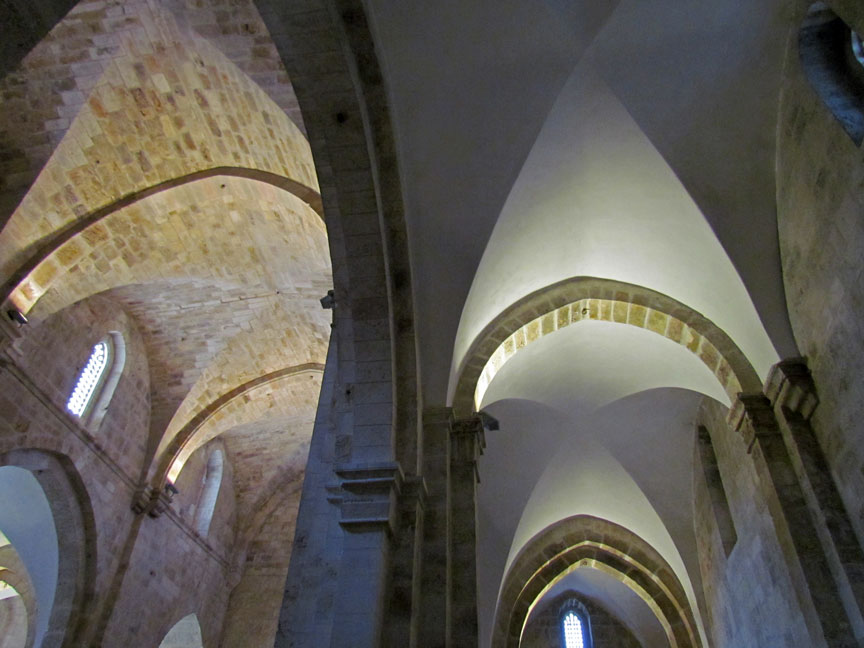
The church possesses amazing acoustics perfect for Gregorian chant, with sounds
moving across the open space and up from the grotto. This makes the church a
pilgrimage site for soloists and choirs, especially sopranos and tenors.
Text from Wikipedia
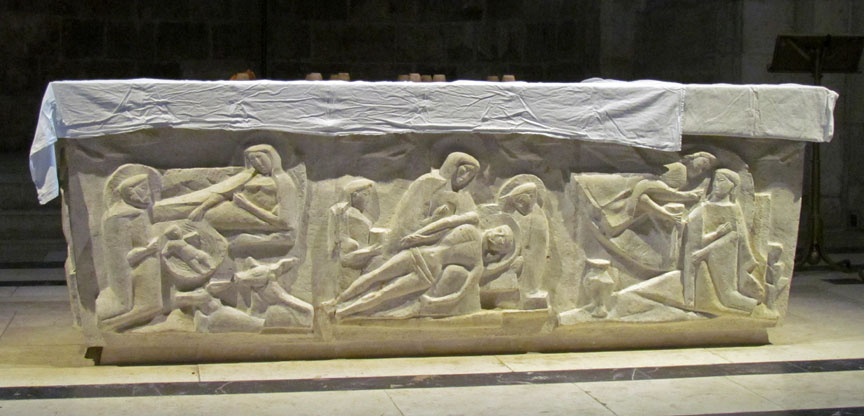
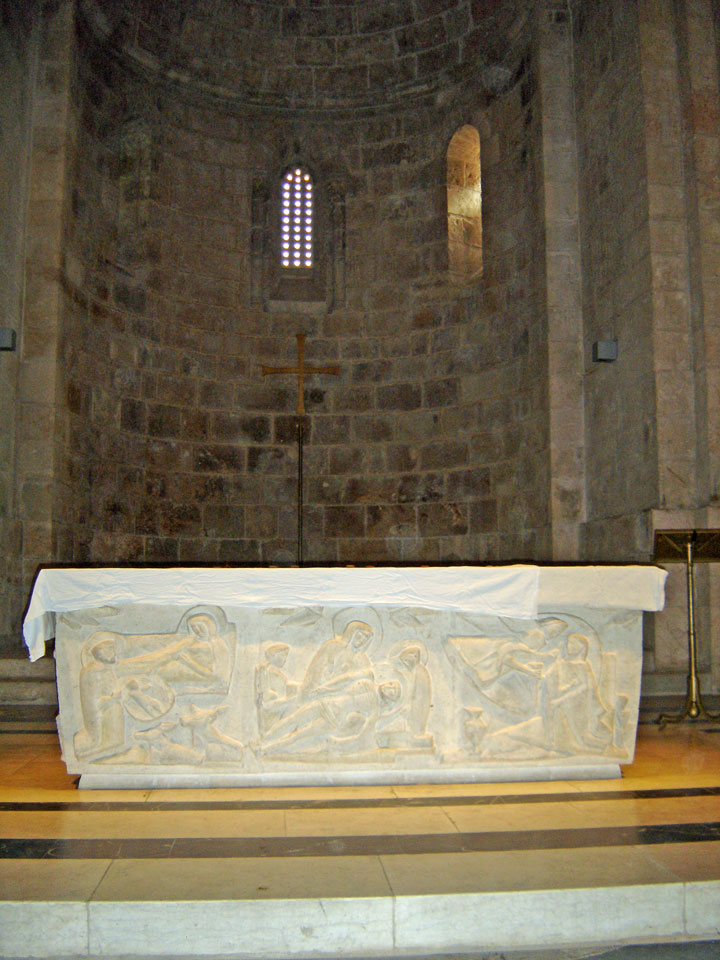

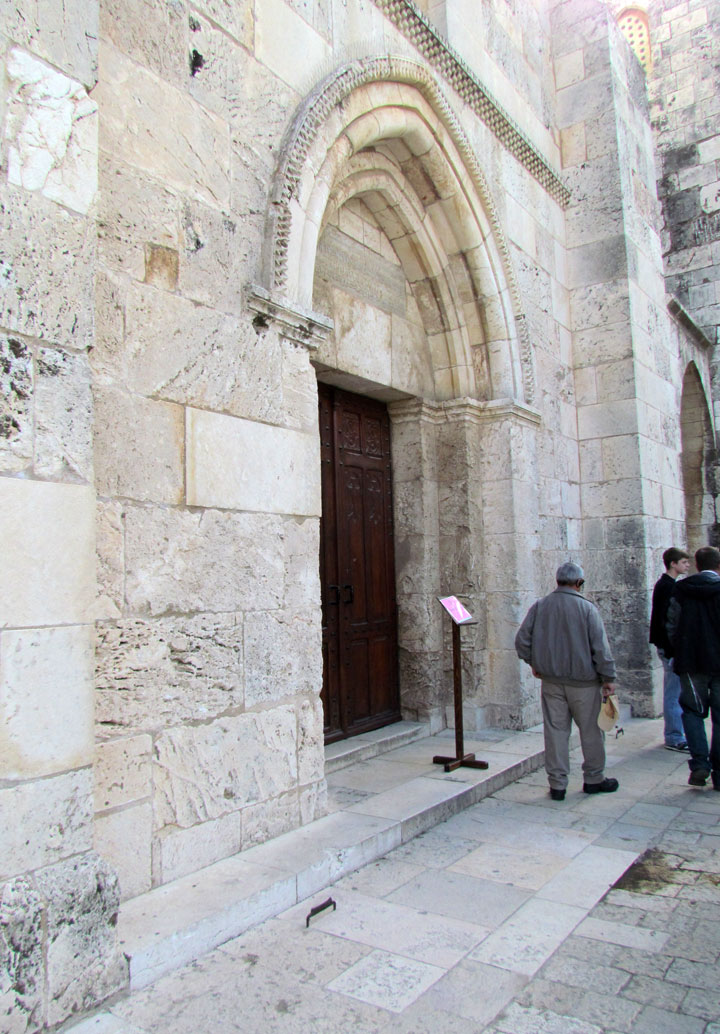

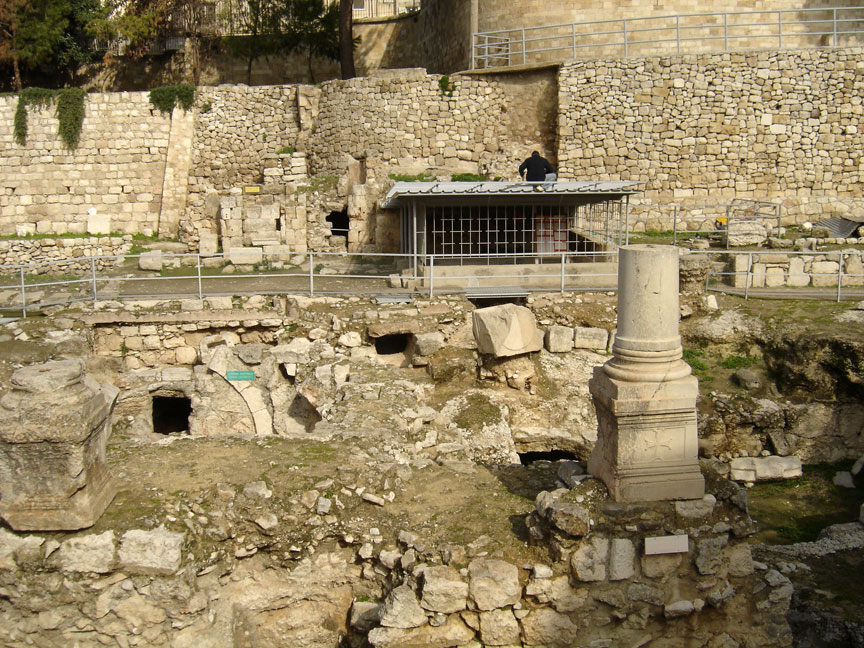
Bethesda Pool area

